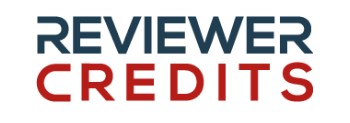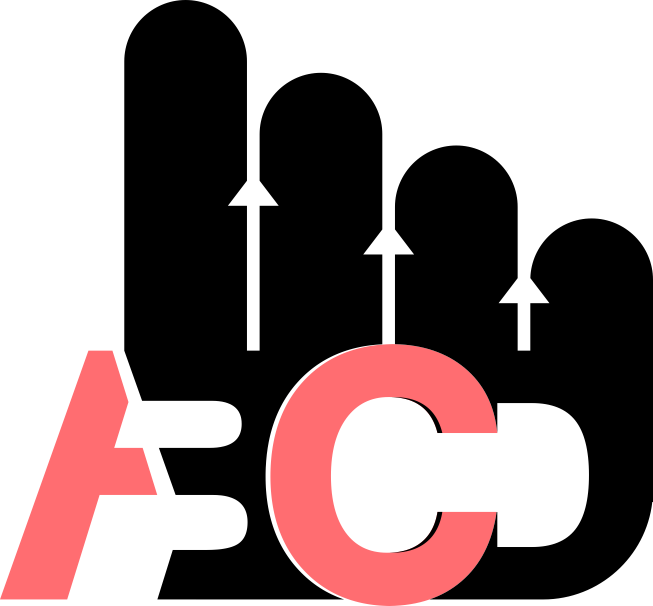Iatrogenic Bile Duct Injury Following Cholecystectomy, Surgical Management and Outcome: A Single Center Experience
DOI:
https://doi.org/10.56056/amj.2018.32Keywords:
Bile duct injury, Complications, Laparoscopic, Open CholecystectomyAbstract
Background and objectives: Iatrogenic bile duct injury (IBDI) is a serious complication during cholecystectomy caused by a surgeon in apparently healthy patients and is associated with a significant rate of morbidity and a low rate of mortality. Our aim was to review the surgical repair of IBDI and post-operative outcomes regarding morbidity and mortality.
Methods: We retrospectively analyzed the surgical management and outcome of biliary injuries during cholecystectomy in 52 patients diagnosed intraoperatively during cholecystectomy or referred postoperatively to Sulaymaniyah digestive and liver surgery center between May 2014 and May 2017.
Results: During these three years; we managed 52 patients of which 41 patients (78.8%) were females. Forty-seven bile duct injuries happened during laparoscopic cholecystectomy and in 5 patients during open-type surgery. Eight patients were diagnosed intraoperatively the remaining 44 were diagnosed post-operatively. The most common type of injury was Strasbourg type E2 (33 patients, 63.5%). The mean age of patients was 32 years in females and 36 years in males. Roux-en- Y hepati- cojejunostomy was the surgical treatment in 47 patients (90.4%). Post-operative morbidity within three years was 34.6% and mortality was 3.8%. Patients were followed for one month on their regular visit to our center or private clinic post-operatively then followed by their irregular visits once they had complains within the period of our study.
Conclusions: Hepaticojejunostomy was the best surgical procedure for repair of IBDI with less postoperative morbidity and mortality in our study, IBDI type E4 according to Strasberg classification associated with more morbidity and mortality than other types.
Downloads
References
Jablonska B, Lampe P. Iatrogenic bile duct injuries: Etiology, diagnosis, and management. World J Gastroenterol. 2009; 15:4097-104.
Lau KN, Sindram D, Agee N, Martinie JB, Iannitti DA. Bile Duct Injury after Single Incision Laparoscopic Cholecystectomy. JSLS 2010;14: 587-91.
Joseph M, Phillips MR, Farrell TM, Rupp CC. Single Incision Laparoscopic Cholecystectomy Is Associated with a Higher Bile Duct Injury Rate: A Review and a Word of Caution. Annals of Surgery.2012;256: 1-6.
Ludwig K, Bernhardt J, Steffen H, Lorenz D. Contribution of intra- operative cholangiography to incidence and outcome of common bile duct injuries during laparoscopic cholecystectomy. Surgical Endoscopy 2002; 16(7): 1098–1104. doi:10.1007/s00464-001-9183-6
Jakimowicz T, wiercz, Szmidt J. Dzia?alno oddzia?ów chirurgii ogólnej w Polsce. Pol Przegl Chir 2009; 81: 532-43.
G?uszek S, Stanowski E, Herjan L: Cholecystektomia laparoskopowa w Polsce – wyniki i powik?ania. Pol Przegl Chir 1995; 67: 386-94.
Kozicki I, Durowicz S, Tarnowski W. Czynniki sprzyjaj ce jatrogen- nym urazom dróg ó?ciowych podczas cholecystektomii laparosko- powej i sposobyw ich zapobieganiu. Post py Nauk Medycznych 2011; 1: 42-8.
Negi SS, Sakhuja P, Malhotra V, Chaudhary A. Factors predicting advanced hepatic fibrosis in patients with post cholecystectomy bile duct strictures. Arch Surg 2004;139:299-303.
Pellegrini CA, Thomas MJ, Way LW. Recurrent biliary stricture. Pat- terns of recurrence and outcome of surgical therapy. Am J Surg 1984; 147:175-80.
V. Singh, K. L. Narasimhan, G. R. Verma, G. Singh. Endoscopic management of traumatic hepatobiliary injuries. J. Gastroenterol. Hepatol.2007; 22 (8): 1205-9.
Z. Volgyi T. Fischer M, Szenes B. Gasztony. Endoscopic management of post-operative biliary tract injuries. Clinical and Experimental Medical Journal (CEMED).2010; 4(1):153–162.
Mohammed AM, Masaad AM. Postcholecystectomy iatrogenic biliary injury presentation, diagnosis, and management at the National Centre of gastroenterology and liver disease – Sudan. Glob J Med Res. 2013; 1:9-14.
Ibnouf MA, Masaad AM. Iatrogenic major bile duct injuries in Su- dan. Sudan Med J 2001; 39:36-9.
Strasberg SM, Hertl M, Soper NJ. An analysis of the problem of biliary injury during laparoscopic cholecystectomy. J Am Coll Surg 1995; 180: 101-25.
Martin RF, Rossi RL Bile duct injuries: spectrum, mechanisms of injury, and their prevention. Surg Clin North Am. 1994; 74:781-803.
Sicklick JK, Camp MS, Lillemoe KD, Melton GB, Yeo CJ, Campbell KA, et al. Surgical management of bile duct injuries sustained during laparoscopic cholecystectomy: Perioperative results in 200 patients. Ann Surg 2005; 241:786-92.
Salih M, Hamid S, Shah HA, Abbas Z, Jafri W. Endoscopic management of biliary leaks after open and laparoscopic cholecystectomy. J Pak Med Assoc 2007; 57:117-9.
Frilling A, Li J, Weber F, Fruhauf NR, Engel J, Beckbaum S, et al. Major bile duct injuries after laparoscopic cholecystectomy: a tertiary center experience. J Gastrointes Surg 2004; 8 (6): 679–85.
A. Savar, I. Carmody, J. R. Hiatt, R. W. Busuttil. Laparoscopic bile duct injuries: management at a tertiary liver center. Am Surg 2004;70(10): 906–909.
Aziz A, Shoreem H, Sallam A, Al-warraky M, Sadek A, Osman M. Iatrogenic bile duct injury: A retrospective analysis of short and long-term outcomes after surgical repair. Saudi Surgical J 2016;4(2) :61-9.
Salama A, Shoreem H, Saleh S, Hegazi O, Housseni M, Abassy M, Et al. Iatrogenic Biliary Injuries: Multidisciplinary Management in a Major Tertiary Referral Center. HPB Surg. Vol. 2014; Article ID 575136:12.
Hajjar NA, Tomus C, Mocan L, Mocan T, Graur F, Iancu C, et al. Management of bile duct injuries following laparoscopic cholecystectomy: Long-term outcome and risk factors influencing biliary reconstruction. Chirurgia (Bucur) 2014; 109:493-9.
Slater K, Strong RW, Wall DR, Lynch SV. Iatrogenic bile duct injury: The scourge of laparoscopic cholecystectomy. ANZ J Surg 2002; 72:83- 8.
Lillemoe KD, Martin SA, Cameron JL, Yeo CJ, Talamini MA, Kaushal S, et al. Major bile duct injuries during laparoscopic cholecystectomy: follow-up after combined surgical and radiologic management. Ann Surg 1997; 225:459-71.
Stewart L, Way LW. Bile duct injuries during laparoscopic cholecystectomy: factors that influence the results of treatment. Ann Surg. 1995; 130:1123-29.
Rossi RL, Tsao JI. Biliary reconstruction. Surg Clin North Am.1994; 74: 825-41.
Bismuth H, Majno PE. Biliary stricture classification based on the principles of surgical treatment. World J Surg. 2001; 25:1241–44
Sutherland F, Launois B, Stanescu M, Campion JP, Spiliopoulos Y, Stastik C. A refined approach to the repair of post cholecystectomy bile duct strictures. Arch Surg 1999; 134:299-302
Bektas H, Schrem H, Winny M, Klempnauer J. Surgical treatment and outcome of iatrogenic bile duct lesions after cholecystectomy and the impact of different clinical classification systems. Br J Surg 2007; 94:1119-27.
Gupta N, Soloman H, Fairchild R, Kaminski DL. Management and outcome of patients with combined bile duct and hepatic artery injuries. Arch Surg.1998; 133:176-81.
Koffron A, Ferrario M, Parsons W, Nemcek A, Saker M, Abecassis M. Failed primary management of iatrogenic biliary injury: incidence and significance of concomitant hepatic arterial disruption. Surgery 2001; 130:722-28.
Schmidt SC, Langrehr JM, Raakow R, Klupp J, Steinmuller T, Neu- haus P. Right hepatic lobectomy for recurrent cholangitis after combined bile duct and right hepatic artery injury during laparoscopic cholecystectomy: a report of two cases. Langenbeck’s Arch Surg.2002; 387:183–187
Schmidt SC, Langrehr JM, Raakow R, Klupp J, Steinmuller T, Neu- haus P. Right hepatic lobectomy for recurrent cholangitis after combined bile duct and right hepatic artery injury during laparoscopic cholecystectomy: a report of two cases. Langenbeck’s Arch Surg 2002; 387:183-187.
Downloads
Published
Issue
Section
License
Copyright (c) 2023 Faraidon Faiq Ahmed, Tayeb Sabir Kareem, Karzan Seerwan Abdulla, Qalandar Hussein Karim

This work is licensed under a Creative Commons Attribution-NonCommercial-ShareAlike 4.0 International License.
The copyright on any article published in AMJ (The Scientific Journal of Kurdistan Higher Council of Medical Specialties )is retained by the author(s) in agreement with the Creative Commons Attribution Non-Commercial ShareAlike License (CC BY-NC-SA 4.0)













